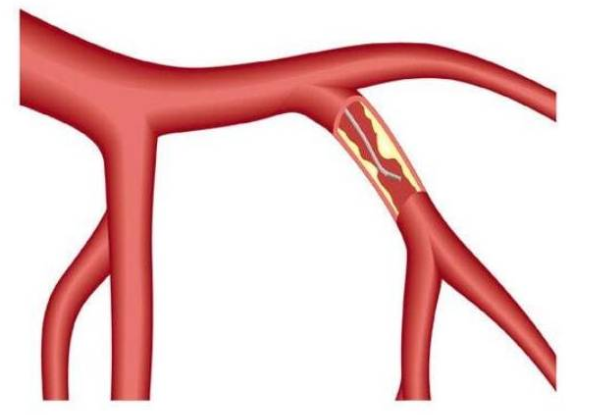Fractional Flow Reserve (FFR) Treatment in Jubilee Hills, Hyderabad
Fractional Flow Reserve (FFR) is a technique used in cardiology to assess the significance of coronary artery blockages in terms of their impact on blood flow. It helps determine whether a narrowed or blocked artery is causing a restriction in blood flow that might affect the heart's ability to receive enough oxygen. Here's a breakdown of the key points about FFR:
Purpose
FFR is used to evaluate the severity of coronary artery disease (CAD) by measuring the pressure differences across a coronary artery stenosis (narrowing). It helps guide treatment decisions, particularly in deciding whether to perform coronary interventions, such as angioplasty or stenting.

Fractional Flow Reserve (FFR)
Fractional Flow Reserve (FFR) Treatment in Jubilee Hills, Hyderabad is an advanced cardiology technique used to evaluate the significance of coronary artery blockages and their effect on blood flow to the heart.
By assessing how much a narrowed or blocked artery limits oxygen delivery, FFR helps cardiologists make more accurate treatment decisions.
Purpose
FFR is primarily used to determine the severity of coronary artery disease (CAD) by measuring pressure differences across a coronary artery stenosis (narrowing).
This method is crucial in identifying whether the blockage is significant enough to warrant procedures like angioplasty or stenting.
Patients opting for Fractional Flow Reserve (FFR) Treatment in Jubilee Hills, Hyderabad benefit from a more targeted approach, avoiding unnecessary interventions and ensuring optimal care based on precise data.
How it Works
During an angiography (a type of X-ray imaging to view blood vessels), a special catheter with a pressure sensor is placed into the coronary artery at the site of the blockage.
A special drug, usually adenosine, is administered to dilate the coronary vessels and induce maximum hyperemia (increased blood flow).
The pressure is measured at two points: just before and after the blockage. The ratio of these pressures determines the FFR.
FFR = Pressure distal to the stenosis / Pressure proximal to the stenosis
- FFR ≤ 0.80: This is generally considered to indicate that the stenosis is functionally significant, meaning it is restricting blood flow and may require intervention (e.g., stenting or bypass surgery).
- FFR > 0.80: This suggests that the stenosis is not causing significant restriction of blood flow, and intervention may not be necessary.
Benefits of FFR
- Guiding treatment: FFR helps to avoid unnecessary stenting or surgery, allowing doctors to make better decisions based on the functional impact of the blockage rather than just the anatomical severity.
- Improved outcomes: Studies have shown that using FFR to guide treatment can improve patient outcomes by preventing overtreatment and improving the targeting of interventions.
- Precision: It provides a more precise, physiological assessment of coronary blockages compared to standard angiography alone, which only shows the anatomical appearance of the arteries.
FFR vs. Other Imaging Methods
While traditional coronary angiography only shows the physical appearance of the coronary arteries, FFR adds a functional assessment to determine how much the blockage actually affects blood flow.
Other diagnostic techniques, such as CT angiography and stress tests, are more general and do not provide the same level of precision in assessing the functional severity of a blockage.
Limitations
- Invasive: FFR requires catheterization, which is more invasive than non-invasive imaging techniques like CT or MRI.
- Potential for errors: The FFR measurement can be influenced by several factors, such as the patient's heart rate, blood pressure, or the presence of microvascular disease.
- Not suitable for all cases: It’s not appropriate for every patient or every type of coronary artery disease (e.g., diffuse disease or lesions in small vessels may not be suitable for FFR assessment).
FFR in the Clinical Setting
FFR is often used in combination with other diagnostic tools, like coronary angi ography, to determine whether an intervention is necessary. It helps cardiologists decide if a blockage is hemodynamically significant (i.e., restricting blood flow enough to cause symptoms or potential damage to the heart).
Other Variants of FFR
FFR-CT (Fractional Flow Reserve derived from CT imaging): This is a non-invasive method that uses CT angiography data to calculate FFR without the need for a catheter. It is being increasingly used to avoid invasive procedures in selected cases.
Conclusion
FFR is an important diagnostic tool in cardiology that helps clinicians determine whether a coronary artery blockage is significant enough to warrant intervention. By providing a functional assessment of blood flow, FFR helps guide treatment decisions and can improve patient outcomes by avoiding unnecessary procedures.
Explore More : Chronic Total Occlusion (CTO) Treatment in Jubilee Hills, Hyderabad
